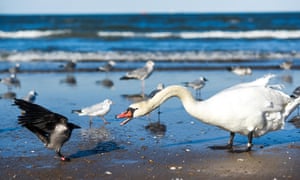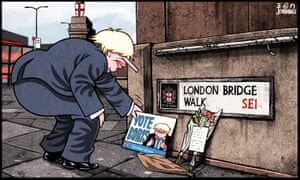'People will forgive you for being wrong, but they will never forgive you for being right - especially if events prove you right while proving them wrong.' Thomas Sowell
Search This Blog
Saturday, 23 September 2023
Wednesday, 16 August 2023
A level Economics: Conservatives are attacking Capitalism
The Economist writes about four new books that show how the reactionary right and Luddite left have converged

2. Tyranny, Inc: How Private Power Crushed American Liberty—And What to Do About It By Sohrab Ahmari. Forum Books; 288 pages; $28
3. Regime Change: Towards a Postliberal Future. By Patrick Deneen. Sentinel; 288 pages; $30. Forum; £22
4. Decades of Decadence: How Our Spoiled Elites Blew America’s Inheritance of Liberty, Security and Prosperity. By Marco Rubio. Broadside Books; 256 pages; $32 and £20
Two decades ago Johan Norberg, a Swedish liberal, wrote a bracing polemic called “In Defence of Global Capitalism”. Leftists hated it and sniffed that he was “on the ‘crazy right’”. Now, when he makes exactly the same arguments, people on the right accuse him of being “woke left”. “I’m not the one who’s changed,” he writes.
The angriest critiques of global capitalism come increasingly from the populist right. This is true in several Western countries, but especially so in America. Republicans used to extol the benefits of free trade and free markets. Now, following Donald Trump’s lead, Republican candidates demand higher barriers, especially to goods from China, and berate corporations for their “wokeness” in supporting greenery and diversity. Four new books illuminate this shift, which fans of economic liberty find alarming.
Their critiques target two villains: corporations and liberalism. Sohrab Ahmari, a socially conservative Iranian-American journalist, is part of the anti-corporate crowd. In “Tyranny, Inc”, he claims that we live in “a system that allows the asset-owning few to subject the asset-less many to pervasive coercion—coercion that, unlike governmental actions, can’t be challenged in court or at the ballot box.”
Many of his complaints sound lefty. Amazon uses intrusive cameras to monitor its warehouse workers; other firms snoop on their minions’ private emails and web browsing. Employers set unpredictable working hours, which staff cannot easily refuse because they need to put food on the table. Life for the bottom 50% in America is precarious, stressful and unjust.
Other complaints reflect Mr Ahmari’s social conservatism. He disapproves of unpredictable working hours partly because of their effect on family life. He rages that woke corporations such as Disney and American Express “train” workers to accept controversial progressive ideas on race and gender.
He is a deft storyteller. A favourite trick is to describe some terrible injustice as if it occurred in a dictatorship like China or Iran and then to reveal—hey, presto!—that it happened in America. He highlights genuine injustices, such as the way some firms abuse gag clauses, non-compete agreements and the arbitration process.
His analysis, however, is flawed. Private firms in America have far less power over workers than he claims. When they behave abusively, they are often challenged in court. More importantly, with unemployment at 3.5%, disgruntled employees can credibly threaten to quit.
To tame corporate tyranny, Mr Ahmari would supercharge the state. It should encourage unionisation in every sector, play “a far more active role in co-ordinating economic activity” and require financial speculators who buy a company and want to change things to submit to the veto of “workers, local communities and other stakeholders”.
This is a recipe for slower growth and less innovation. Indeed, it is often hard to distinguish Mr Ahmari’s economic proposals from those of Elizabeth Warren or Bernie Sanders on the Democratic left. Yet he thinks his mix of social conservatism and economic populism is the future of the Republican Party, helping it win elections long after Donald Trump has retired or gone to jail. He may be right. This was the calculation made by jd Vance, who first rose to prominence as the author of “Hillbilly Elegy”, which explained the plight of America’s forgotten white working-class, before he ran in Ohio for a Senate seat—and won.
In “Regime Change: Towards a Postliberal Future”, Patrick Deneen, a professor of political science at the University of Notre Dame, gives voice to a gloomy, reactionary strain of thinking. On the first page he laments America’s blighted cities, family breakdown, inequality and “psychic despair”, noting “a growing chorus of voices [reflecting] on the likelihood and even desirability of civil war”.
For all this, he blames liberalism: both the classical sort, which seeks material progress through creative destruction, and the progressive sort that aims to upend family and tradition. To turn back the clock, he would have the state support bigger traditional families (as it does in Hungary) and manufacturing (as it does under Joe Biden). He would restrict immigration, which he says elite liberals support in order to undercut the wages of the native-born and supply themselves with cheap servants.
None of this will work. Plenty of evidence suggests that immigration has little effect on native wages (so curbing it will not raise them); that industrial policy is generally wasteful; that pro-family policies have little effect on fertility; and that Hungary is a kleptocracy.
“Conservative” parties in the West have championed free markets at least since the days of Ronald Reagan and Margaret Thatcher. But free markets are profoundly unconservative. They bring rapid change, usually making people better off, but also disrupting old ways of doing things. Serious conservatives aim to minimise this disruption without impeding growth too much. Demagogues, however, pretend there is no trade-off: that you can have all the benefits of progress without changing the way you live.
For an idea of how ideas like Mr Ahmari’s and Mr Deneen’s might sound when stripped of nuance for the campaign trail, try “Decades of Decadence”. When Marco Rubio first ran for the United States Senate in 2010, he talked about how wonderful it was that he, the son of penniless Cuban immigrants, could aspire to high office in America. Now, still aspiring to even higher office from within a much-changed Republican Party (despite losing to Donald Trump in the Republican primary in 2016), he has embraced his erstwhile rival’s nativist clichés.
He decries America’s “open southern border” and yearns for the good old days when “we took it for granted that most of the things we bought…were made right here at home by our fellow Americans.” He blames China’s entry to the World Trade Organisation for the fact that “Too many Americans who want to live normal decent lives are unable to do so.” To those who say that imports from China might improve American lives, he retorts that such people think of Americans not as “workers, fathers and citizens” but as “consumers…nothing more”.
“The Capitalist Manifesto” by Mr Norberg of the Cato Institute, a think-tank, offers a joyful counterblast to Mr Rubio’s Trumpy stridence. The three decades after 1990, when globalisation took off, have seen greater improvements in human living conditions than the previous three millennia, he shows. Poverty is down, lifespans are longer and technology that only the Pentagon could afford in 1990 is now on every smartphone. “I am not saying that the era has been unequivocally good, only that it has been better than any other era humanity has experienced,” comments Mr Norberg.
When imitation isn’t flattery
Both the new right and the old (and new) left share a zero-sum view of economics, imagining that one person’s gain must be another’s loss. The old left hated free trade and free markets because they supposedly let rich countries exploit poor ones. Now that many of those poor countries have debunked this argument by prospering, the new right complains that free trade and free markets let China exploit the West.
Mr Norberg shows that all of their proposed solutions have been tried before, with dismal results. One study of 50 countries with populist leaders found that 15 years after they take control, their economies are a tenth smaller than those of comparable countries.
In a book packed with vivid examples, one of the most compelling concerns covid-19. Pandemic lockdowns, though widely opposed by the new right, actually achieved many of their stated aims. Borders were closed, migration halted, supply chains disrupted. Global poverty soared—and life became miserable in rich countries, too. Mr Norberg concludes: “It is difficult to imagine a stronger and more tragic proof that progress depends on open societies and economies.” If only his was the last word.
Saturday, 4 March 2023
Wednesday, 15 February 2023
Friday, 4 November 2022
Sunday, 22 May 2022
Saturday, 14 May 2022
Wednesday, 9 February 2022
Friday, 4 February 2022
Tuesday, 17 August 2021
Wednesday, 19 February 2020
The white swan harbingers of global economic crisis are already here
In my 2010 book, Crisis Economics, I defined financial crises not as the “black swan” events that Nassim Nicholas Taleb described in his eponymous bestseller but as “white swans”. According to Taleb, black swans are events that emerge unpredictably, like a tornado, from a fat-tailed statistical distribution. But I argued that financial crises, at least, are more like hurricanes: they are the predictable result of builtup economic and financial vulnerabilities and policy mistakes.
There are times when we should expect the system to reach a tipping point – the “Minsky Moment” – when a boom and a bubble turn into a crash and a bust. Such events are not about the “unknown unknowns” but rather the “known unknowns”.
Beyond the usual economic and policy risks that most financial analysts worry about, a number of potentially seismic white swans are visible on the horizon this year. Any of them could trigger severe economic, financial, political and geopolitical disturbances unlike anything since the 2008 crisis.
For starters, the US is locked in an escalating strategic rivalry with at least four implicitly aligned revisionist powers: China, Russia, Iran and North Korea. These countries all have an interest in challenging the US-led global order and 2020 could be a critical year for them, owing to the US presidential election and the potential change in US global policies that could follow.
Under Donald Trump, the US is trying to contain or even trigger regime change in these four countries through economic sanctions and other means. Similarly, the four revisionists want to undercut American hard and soft power abroad by destabilising the US from within through asymmetric warfare. If the US election descends into partisan rancour, chaos, disputed vote tallies and accusations of “rigged” elections, so much the better for rivals of the US. A breakdown of the US political system would weaken American power abroad.
Moreover, some countries have a particular interest in removing Trump. The acute threat that he poses to the Iranian regime gives it every reason to escalate the conflict with the US in the coming months – even if it means risking a full-scale war – on the chance that the ensuing spike in oil prices would crash the US stock market, trigger a recession, and sink Trump’s re-election prospects. Yes, the consensus view is that the targeted killing of Qassem Suleimani has deterred Iran but that argument misunderstands the regime’s perverse incentives. War between US and Iran is likely this year; the current calm is the one before the proverbial storm.
As for US-China relations, the recent phase one deal is a temporary Band-Aid. The bilateral cold war over technology, data, investment, currency and finance is already escalating sharply. The Covid-19 outbreak has reinforced the position of those in the US arguing for containment and lent further momentum to the broader trend of Sino-American “decoupling”. More immediately, the epidemic is likely to be more severe than currently expected and the disruption to the Chinese economy will have spillover effects on global supply chains – including pharma inputs, of which China is a critical supplier – and business confidence, all of which will likely be more severe than financial markets’ current complacency suggests.
Although the Sino-American cold war is by definition a low-intensity conflict, a sharp escalation is likely this year. To some Chinese leaders, it cannot be a coincidence that their country is simultaneously experiencing a massive swine flu outbreak, severe bird flu, a coronavirus outbreak, political unrest in Hong Kong, the re-election of Taiwan’s pro-independence president, and stepped-up US naval operations in the East and South China Seas. Regardless of whether China has only itself to blame for some of these crises, the view in Beijing is veering toward the conspiratorial.
But open aggression is not really an option at this point, given the asymmetry of conventional power. China’s immediate response to US containment efforts will likely take the form of cyberwarfare. There are several obvious targets. Chinese hackers (and their Russian, North Korean, and Iranian counterparts) could interfere in the US election by flooding Americans with misinformation and deep fakes. With the US electorate already so polarised, it is not difficult to imagine armed partisans taking to the streets to challenge the results, leading to serious violence and chaos.
Revisionist powers could also attack the US and western financial systems – including the Society for Worldwide Interbank Financial Telecommunication (Swift) platform. Already, the European Central Bank president, Christine Lagarde, has warned that a cyber-attack on European financial markets could cost $645bn (£496.2bn). And security officials have expressed similar concerns about the US, where an even wider range of telecommunication infrastructure is potentially vulnerable.
By next year, the US-China conflict could have escalated from a cold war to a near hot one. A Chinese regime and economy severely damaged by the Covid-19 crisis and facing restless masses will need an external scapegoat, and will likely set its sights on Taiwan, Hong Kong, Vietnam and US naval positions in the East and South China Seas; confrontation could creep into escalating military accidents. It could also pursue the financial “nuclear option” of dumping its holdings of US Treasury bonds if escalation does take place. Because US assets comprise such a large share of China’s (and, to a lesser extent, Russia’s) foreign reserves, the Chinese are increasingly worried that such assets could be frozen through US sanctions (like those already used against Iran and North Korea).
Of course, dumping US Treasuries would impede China’s economic growth if dollar assets were sold and converted back into renminbi (which would appreciate). But China could diversify its reserves by converting them into another liquid asset that is less vulnerable to US primary or secondary sanctions, namely gold. Indeed, China and Russia have been stockpiling gold reserves (overtly and covertly), which explains the 30% spike in gold prices since early 2019.
In a sell-off scenario, the capital gains on gold would compensate for any loss incurred from dumping US Treasuries, whose yields would spike as their market price and value fell. So far, China and Russia’s shift into gold has occurred slowly, leaving Treasury yields unaffected. But if this diversification strategy accelerates, as is likely, it could trigger a shock in the US Treasuries market, possibly leading to a sharp economic slowdown in the US.
The US, of course, will not sit idly by while coming under asymmetric attack. It has already been increasing the pressure on these countries with sanctions and other forms of trade and financial warfare, not to mention its own world-beating cyberwarfare capabilities. US cyber-attacks against the four rivals will continue to intensify this year, raising the risk of the first-ever cyber world war and massive economic, financial and political disorder.
Looking beyond the risk of severe geopolitical escalations in 2020, there are additional medium-term risks associated with climate change, which could trigger costly environmental disasters. Climate change is not just a lumbering giant that will cause economic and financial havoc decades from now. It is a threat in the here and now, as demonstrated by the growing frequency and severity of extreme weather events.
In addition to climate change, there is evidence that separate, deeper seismic events are under way, leading to rapid global movements in magnetic polarity and accelerating ocean currents. Any one of these developments could augur an environmental white swan event, as could climatic “tipping points” such as the collapse of major ice sheets in Antarctica or Greenland in the next few years. We already know that underwater volcanic activity is increasing; what if that trend translates into rapid marine acidification and the depletion of global fish stocks upon which billions of people rely?
As of early 2020, this is where we stand: the US and Iran have already had a military confrontation that will likely soon escalate; China is in the grip of a viral outbreak that could become a global pandemic; cyberwarfare is ongoing; major holders of US Treasuries are pursuing diversification strategies; the Democratic presidential primary is exposing rifts in the opposition to Trump and already casting doubt on vote-counting processes; rivalries between the US and four revisionist powers are escalating; and the real-world costs of climate change and other environmental trends are mounting.
This list is hardly exhaustive but it points to what one can reasonably expect for 2020. Financial markets, meanwhile, remain blissfully in denial of the risks, convinced that a calm if not happy year awaits major economies and global markets.
Monday, 2 December 2019
Friday, 26 April 2019
Why Sri Lanka attackers' wealthy backgrounds shouldn't surprise us

When police and soldiers in Sri Lanka set out on the trail of the attackers who killed more than 350 people in a series of bombings on Easter Sunday, they did not expect to find themselves in Dematagoda, one of the wealthiest neighbourhoods in Colombo.
Within 90 minutes of the attack, as hospitals struggled to cope with the huge number of casualties, the security forces were closing in on a three-storey house with a BMW parked outside.
Two brothers lived there with their families: 38-year-old Inshaf Ibrahim, a copper factory owner, and Ilham, 36. Their father, Mohamed Yusuf Ibrahim, one of the most successful businesspeople in the island nation’s Muslim community, made a fortune exporting spices. The two brothers were also involved in the jewellery trade. They were both among the attackers.
When police moved in, there was another blast. It is unclear whether the top floors were wired with explosives or if the elder brother’s wife, Fatima, had set them off. The couple’s three children were instantly killed.
On Thursday, police confirmed that Mohamed Yusuf Ibrahim had been detained.
“They seemed like good people,” a neighbour told reporters from her rundown home opposite the Ibrahim family residence in the capital.
His surprise was widely shared. In the Sri Lanka, the wider region and beyond, many still find it very difficult to understand how those with comfortable lives can be drawn into extremism, and kill themselves and hundreds of innocent people.
The question has been asked many times before. In Europe, it became an issue in the 1970s when relatively well-off young men and women in Germany, Japan, Italy or the US began to engage in violent activism. With the spread of suicide tactics in the 1980s and early 1990s, it seemed more perplexing than ever.
Then came a new wave of Islamic militancy, with attacks of unprecedented lethality. None of the men who flew planes into the World Trade Center in New York in 2001 faced economic hardship. The leader of their organisation, Osama bin Laden, was the son of a construction tycoon.
One of the Easter Sunday bombers attended Kingston University in south-west London from 2006-07, where he studied aeronautical engineering, and then went on to study in Australia. From a wealthy tea trading family based near the central city of Kandy, he had attended top international schools – as had other bombers, it appears.
There are many examples of terrorists with good educational qualifications among Islamic militants. The current leader of al-Qaida, Ayman al-Zawahiri, is a qualified paediatrician, while two-thirds of the 9/11 attackers had degrees. One plot in Britain in 2007 was almost entirely composed by highly qualified medical personnel.
A group of Bangladeshis linked to Islamic State that attacked a bakery favoured by westerners in Dhaka in 2016, killing 20 hostages, share a similar profile to the Sri Lankan bombers. Almost all were from wealthy, highly educated backgrounds.
Isis has claimed Sunday’s bombings – its most lethal attack since its emergence five years ago. The group’s leadership has a rather different composition. Many are religious clerics, or former Ba’ath party officials. But many of the volunteers who travelled to Syria and Iraq from countries such as Egypt or Tunisia were from comfortable backgrounds, too, as were many who travelled from the UK.
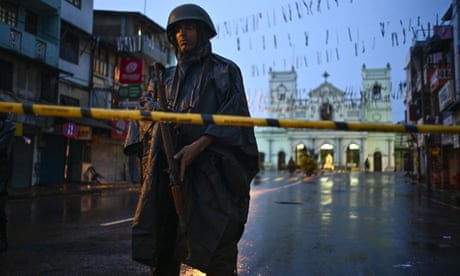
Sri Lanka attacks: police hunting 140 Isis suspects, says president
However, on close inspection, many of the terrorists who went to university never finished their degrees. Others earned qualifications from institutions with dubious or limited academic credibility; many British extremists fall into this category.
Mohammed Zahran Hashim, the rural Sri Lankan preacher who is thought to have been the leader of the Easter bombing attackers and was in touch with Isis overseas, had limited wealth and only a rudimentary religious education.
Both al-Qaida and Isis have attracted large numbers of foot soldiers from backgrounds that are marginal in diverse ways. This is true in the Middle East and south Asia, where minor tribal leaders, out of work craftsmen, smugglers, former militia members, minor government officials, and poor farmers’ children sent to free religious schools have all been drawn to Islamic militant ideologies.
In Europe, many of the men who carried out recent terrorist attacks in France and Belgium were petty criminals, living on the economic margins.
Taken together, this teaches us that neither education nor economics can help explain any one individual’s violent activism. The literature on radicalisation that has been produced since 2001 has yet to pinpoint a cause, and few experts think there might be one.
Instead there are many factors that are seen as creating a risk of radicalisation. When they combine, the risk becomes a clear and present danger. Terrorism, abhorrent though it may be, is a social activity. Ideas spread and are reinforced among peers, married couples, old school friends and families. These ideas are simple. They explain complex events, identities and histories through a rudimentary and binary narrative. Neither education nor wealth is proof against them, and nor is poverty or ignorance.
Tuesday, 17 April 2018
An Alternative View - The Gas Attack on Douma, Syria
This is the story of a town called Douma, a ravaged, stinking place of smashed apartment blocks – and of an underground clinic whose images of suffering allowed three of the Western world’s most powerful nations to bomb Syria last week. There’s even a friendly doctor in a green coat who, when I track him down in the very same clinic, cheerfully tells me that the “gas” videotape which horrified the world – despite all the doubters – is perfectly genuine.
War stories, however, have a habit of growing darker. For the same 58-year old senior Syrian doctor then adds something profoundly uncomfortable: the patients, he says, were overcome not by gas but by oxygen starvation in the rubbish-filled tunnels and basements in which they lived, on a night of wind and heavy shelling that stirred up a dust storm.
As Dr Assim Rahaibani announces this extraordinary conclusion, it is worth observing that he is by his own admission not an eyewitness himself and, as he speaks good English, he refers twice to the jihadi gunmen of Jaish el-Islam [the Army of Islam] in Douma as “terrorists” – the regime’s word for their enemies, and a term used by many people across Syria. Am I hearing this right? Which version of events are we to believe?
By bad luck, too, the doctors who were on duty that night on 7 April were all in Damascus giving evidence to a chemical weapons enquiry, which will be attempting to provide a definitive answer to that question in the coming weeks.
France, meanwhile, has said it has “proof” chemical weapons were used, and US media have quoted sources saying urine and blood tests showed this too. The WHO has said its partners on the ground treated 500 patients “exhibiting signs and symptoms consistent with exposure to toxic chemicals”.

At the same time, inspectors from the Organisation for the Prohibition of Chemical Weapons (OPCW) are currently blocked from coming here to the site of the alleged gas attack themselves, ostensibly because they lacked the correct UN permits.
Before we go any further, readers should be aware that this is not the only story in Douma. There are the many people I talked to amid the ruins of the town who said they had “never believed in” gas stories – which were usually put about, they claimed, by the armed Islamist groups. These particular jihadis survived under a blizzard of shellfire by living in other’s people’s homes and in vast, wide tunnels with underground roads carved through the living rock by prisoners with pick-axes on three levels beneath the town. I walked through three of them yesterday, vast corridors of living rock which still contained Russian – yes, Russian – rockets and burned-out cars.
So the story of Douma is thus not just a story of gas – or no gas, as the case may be. It’s about thousands of people who did not opt for evacuation from Douma on buses that left last week, alongside the gunmen with whom they had to live like troglodytes for months in order to survive. I walked across this town quite freely yesterday without soldier, policeman or minder to haunt my footsteps, just two Syrian friends, a camera and a notebook. I sometimes had to clamber across 20-foot-high ramparts, up and down almost sheer walls of earth. Happy to see foreigners among them, happier still that the siege is finally over, they are mostly smiling; those whose faces you can see, of course, because a surprising number of Douma’s women wear full-length black hijab.
I first drove into Douma as part of an escorted convoy of journalists. But once a boring general had announced outside a wrecked council house “I have no information” – that most helpful rubbish-dump of Arab officialdom – I just walked away. Several other reporters, mostly Syrian, did the same. Even a group of Russian journalists – all in military attire – drifted off.
It was a short walk to Dr Rahaibani. From the door of his subterranean clinic – “Point 200”, it is called, in the weird geology of this partly-underground city – is a corridor leading downhill where he showed me his lowly hospital and the few beds where a small girl was crying as nurses treated a cut above her eye.
“I was with my family in the basement of my home three hundred metres from here on the night but all the doctors know what happened. There was a lot of shelling [by government forces] and aircraft were always over Douma at night – but on this night, there was wind and huge dust clouds began to come into the basements and cellars where people lived. People began to arrive here suffering from hypoxia, oxygen loss. Then someone at the door, a “White Helmet”, shouted “Gas!”, and a panic began. People started throwing water over each other. Yes, the video was filmed here, it is genuine, but what you see are people suffering from hypoxia – not gas poisoning.”
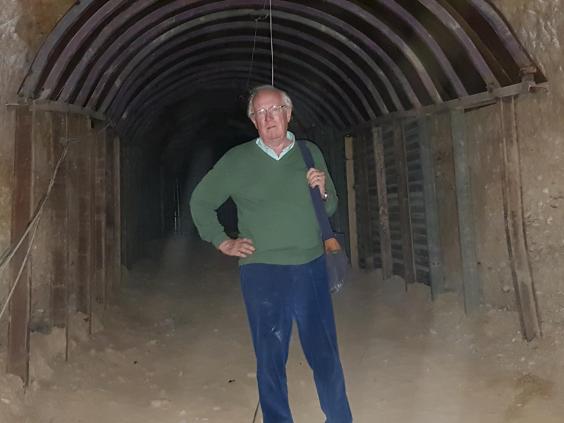
Independent Middle East Correspondent Robert Fisk in one of the miles of tunnels hacked beneath Douma by prisoners of Syrian rebels (Yara Ismail)
But it was a strange world I walked into. Two men, Hussam and Nazir Abu Aishe, said they were unaware how many people had been killed in Douma, although the latter admitted he had a cousin “executed by Jaish el-Islam [the Army of Islam] for allegedly being “close to the regime”. They shrugged when I asked about the 43 people said to have died in the infamous Douma attack.
The White Helmets – the medical first responders already legendary in the West but with some interesting corners to their own story – played a familiar role during the battles. They are partly funded by the Foreign Office and most of the local offices were staffed by Douma men. I found their wrecked offices not far from Dr Rahaibani’s clinic. A gas mask had been left outside a food container with one eye-piece pierced and a pile of dirty military camouflage uniforms lay inside one room. Planted, I asked myself? I doubt it. The place was heaped with capsules, broken medical equipment and files, bedding and mattresses.
Of course we must hear their side of the story, but it will not happen here: a woman told us that every member of the White Helmets in Douma abandoned their main headquarters and chose to take the government-organised and Russian-protected buses to the rebel province of Idlib with the armed groups when the final truce was agreed.
There were food stalls open and a patrol of Russian military policemen – a now optional extra for every Syrian ceasefire – and no-one had even bothered to storm into the forbidding Islamist prison near Martyr’s Square where victims were supposedly beheaded in the basements. The town’s complement of Syrian interior ministry civilian police – who eerily wear military clothes – are watched over by the Russians who may or may not be watched by the civilians. Again, my earnest questions about gas were met with what seemed genuine perplexity.
How could it be that Douma refugees who had reached camps in Turkey were already describing a gas attack which no-one in Douma today seemed to recall? It did occur to me, once I was walking for more than a mile through these wretched prisoner-groined tunnels, that the citizens of Douma lived so isolated from each other for so long that “news” in our sense of the word simply had no meaning to them. Syria doesn’t cut it as Jeffersonian democracy – as I cynically like to tell my Arab colleagues – and it is indeed a ruthless dictatorship, but that couldn’t cow these people, happy to see foreigners among them, from reacting with a few words of truth. So what were they telling me?
They talked about the Islamists under whom they had lived. They talked about how the armed groups had stolen civilian homes to avoid the Syrian government and Russian bombing. The Jaish el-Islam had burned their offices before they left, but the massive buildings inside the security zones they created had almost all been sandwiched to the ground by air strikes. A Syrian colonel I came across behind one of these buildings asked if I wanted to see how deep the tunnels were. I stopped after well over a mile when he cryptically observed that “this tunnel might reach as far as Britain”. Ah yes, Ms May, I remembered, whose air strikes had been so intimately connected to this place of tunnels and dust. And gas?
Monday, 19 June 2017
Balance of power deters would-be whistleblowers from rocking the boat
A couple of days ago I asked a UK Sport insider why more athletes do not go public with their concerns. “Put yourself in their shoes,” came the reply. “One path is potentially well rewarded. And then there’s another that comes after speaking out. If you are a rational person, do you want to travel down the road of a Brian Cookson or a Jess Varnish? There is a massive disincentive to rock the boat.”
One can see their point. Cookson, having enjoyed a long career in sports administration, is now president of the UCI, earning £235,000 a year. Varnish, having spoken out about the problems in British Cycling – and having been largely vindicated – finds herself marginalised and ostracised. At 26 she also knows her career in elite sport is probably over. What would you do?

British Bobsleigh team told: keep quiet about bullying or miss Olympics
Of course not every complaint is serious or justified. And nor is elite sport a place to hold hands round the campfire and sing kumbaya. But in a week where fresh and disturbing allegations about bullying in British Bobsleigh and child abuse in British Canoeing were heard there is an urgent need to tilt the balance in favour of whistleblowers and honest brokers.
Indeed, lost amid the flurry of reports into British Cycling last Wednesday was the damning verdict from the financial accountants Moore Stephens on UK Sport’s whistleblower policy. In their view it was inadequate: it needed to be “more robust”, “encourage a culture of openness” and “provide statutory protection from unfair dismissal for making a protected disclosure”. The question is how.
The main problem is that a vast amount of power lies with UK Sport and the heads of each sport – and very little with the athletes, who are subject to an annual review whereby their lottery money can be cut or stopped completely.
“Player power” is often heard of in football but for those in Olympic sports the power dynamic favours coaches and administrators – which hardly encourages athletes to question them.
One coach recently told of an athlete who made some modest but justified criticisms of his sport. A few months later his lottery funding was trimmed. Perhaps it was coincidental but his fellow athletes took away a lesson: he rocked the boat and lost out. As the coach explained: “A lot of signals are sent to people to say don’t misbehave and I am troubled by that. No one is saying that bullying and other such behaviour is widespread but there is an environment that does not allow enough checks and balances.”
One can imagine how vulnerable this leaves the athletes. One false move and their livelihood is toast. It does not help that Olympic athletes do not really have a strong union. Nominally there is the British Athletes Commission, which represents 1,400 Olympians and Paralympians, but few believe it has enough resources or independence to be as effective as it needs to be.
There is another factor at play, too. Many athletes want to stay in sport, either as a coach or administrator, when they quit the field of play. For those who pick up a reputation as a troublemaker the stink is hard to shake. As the former British bobsleigher Henry Nwume, who spoke to the BBC last week about problems inside his sport, told me: “You have everything to lose by talking. Athletes know that they run the risk of being attacked, discredited and blackballed. And that continues even after they retire. They fear positions that might have been opened for them will be closed. And they will become persona non grata.”
Whistleblowers also know their accounts are likely to be belittled by athletes inside the system. This is not necessarily malicious. Coaches tend to treat potential medallists better: one I spoke to admitted he was seen as a “golden child” by his performance director and never received – or even saw – the abuse that many of his friends got. So when Sir Bradley Wiggins or Sir Chris Hoy is asked if there was anything wrong with British Cycling, perhaps one should not be shocked when they say no.
UK Sport deserves praise for lifting Britain from 36th in the medal table in 1996 to second in Rio last year. There are many smart people in the system, too. But it surely knows now that its tunnel‑vision focus on winning can breed the type of performance director or head coach who knows the main performance indicator is medals and so puts athlete welfare lower on the list of priorities. It does not help when UK Sport’s chief executive, Liz Nicholl, insists that “99% of this system is working really well” when increasingly the evidence suggests otherwise.
The best organisations do not just challenge themselves to be better. They allow themselves to be challenged in turn. In fact, they welcome it because they know being open and subject to rigorous examination helps them improve. Next month Katherine Grainger, a ferocious competitor with vast intellect, takes over as chair of UK Sport. How she responds to the mounting issues of athlete welfare, whilst keeping standards high, will surely define her tenure.
Saturday, 25 February 2017
Monday, 15 December 2014
All Sehwag's children
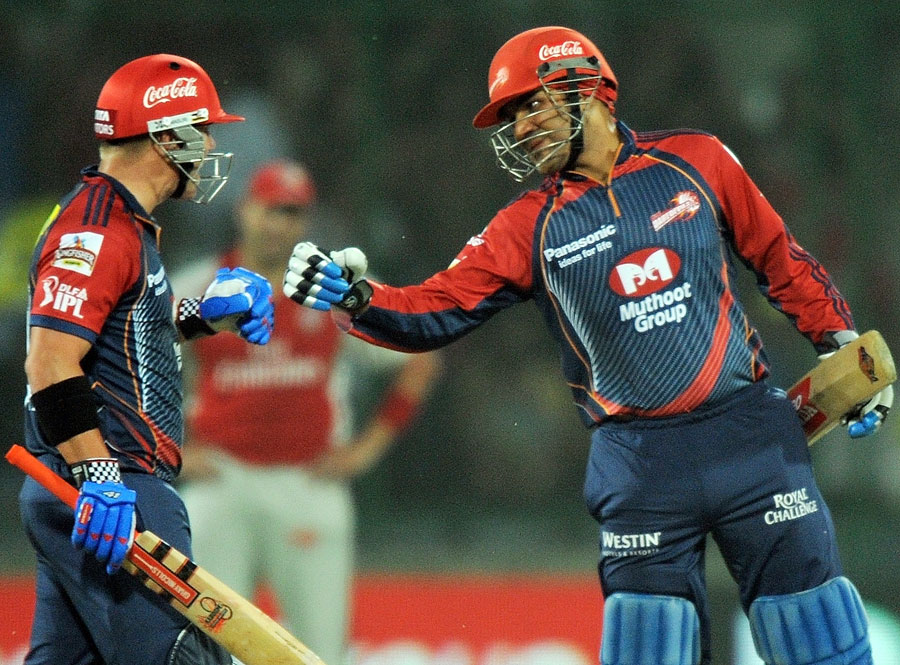
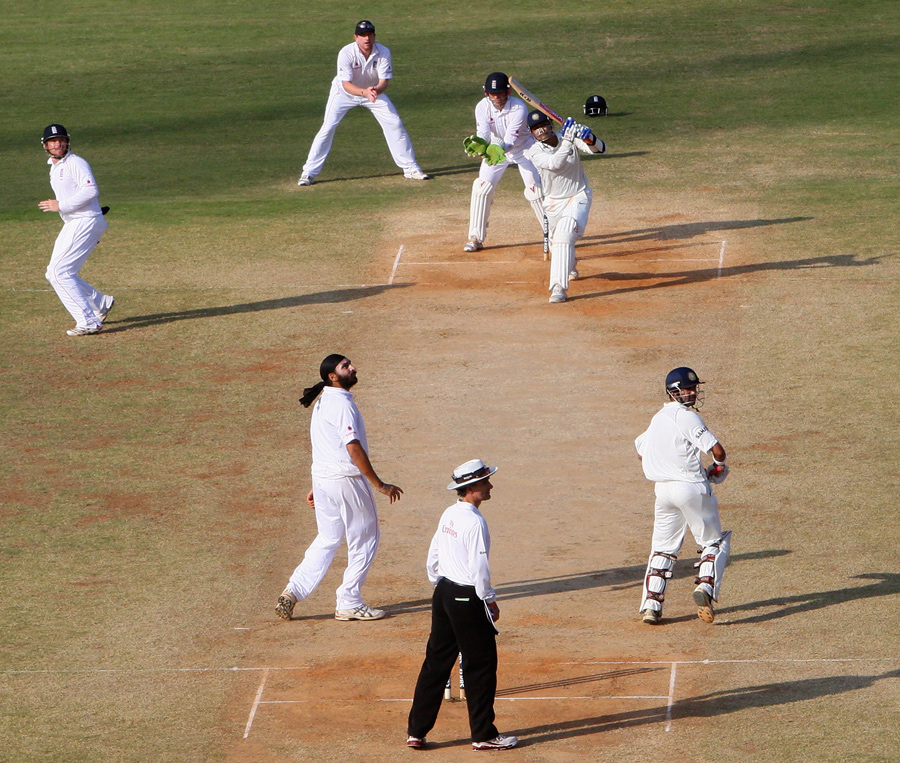
Wednesday, 29 August 2012
A quick course on playing spin in the subcontinent
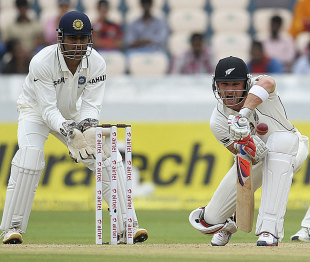
| |||
Read the ball from the hand, not from the pitch, because it will give you a little more time to react. Use both feet to either get to the pitch of the ball with a long forward stride or to go deep inside the crease to shorten the length. Spinners are at their most dangerous when the batsman refuses to get to the pitch of the ball to smother the lateral movement off the surface. That's what New Zealand did in Hyderabad. Most of their batsmen were rooted to the crease and offered unconvincing forward prods to everything that was pitched up, in hope that the ball would find the middle of the bat. Their shots lacked conviction and resulted in many bat-pad catches. Some New Zealand batsmen started shuffling to counter the spin, but little did they realise that sideways movement within the crease can only be effective against fast bowlers because it helps you play in the second line. Only a decisive forward-and-backward movement can save the day against spinners. In England, Hashim Amla did that beautifully against Graeme Swann.
On turning pitches, you must be aggressive, for no matter how good your defensive technique, the odd ball will turn and jump unexpectedly to abruptly end your stay. If you only concentrate on defending, as New Zealand did in the second innings, the spinners won't feel threatened and will continue to flight the ball. To extract optimum spin and bounce off the surface, spinners must give the ball some air. This becomes easier if the batsman has gone into a shell. All quality players of spin take the aerial route really early in the innings, because it forces the bowler to not only push the fielders back but to also cut down on flighting the ball. Once the fielders are pushed back, batsmen find it easier to rotate the strike, and the moment a spinner starts bowling flatter, he plays into your hands. MS Dhoni did it efficiently against Jeetan Patel the moment he walked in to bat in Hyderabad.
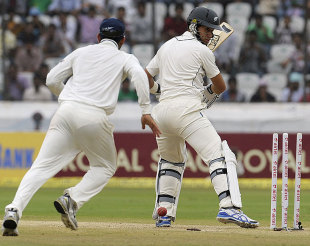
| |||
Since spinners bowl a lot slower than the quicks, it's tempting to reach for the ball. But if you're defending, you must resist the temptation and allow the ball to come to you, as you would when facing a fast bowler. Once you have allowed the ball to come to you, play it as delicately as possible with soft hands. Let the top hand remain firm while barely holding the bat with the bottom hand.
Wednesday, 30 May 2012
How to Adapt to the 4 Types of Attacking Batsmen
http://www.pitchvision.com/how-to-adapt-to-the-4-types-of-attacking-batsmen
Sometimes your bowling spell doesn't go to plan and the batsman is the one on the attack.
Now it's time to adapt our plan to take into account how and where the batsman is hitting the ball.
One option is to move a fielder or two around to cut off his favourite shot, and try and force him to play a shot he isn't so comfortable with. This will often lead to his dismissal.
Another option is to leave the field as it is. Instead back ourselves to dismiss him by adjusting our bowling strategy itself. Here we look at how to counter-attack four types of aggressive batsman:
1. The batsman who is playing aggressively against the spin
The batter is cutting and cover driving the off spinner, or playing across the line against the leg spinner. Here the percentages are with you, so simply keep spinning the ball as hard as possible to try and beat the bat. Probe for an error. Work in some simple variations and find the hole. Keep spinning the ball as much as possible. Eventually, he will make a mistake.
2. The batsman who is consistently playing with the spin
Here the batter is cutting and cover driving the leg spinner, and working the off spinner into midwicket. He has now left himself vulnerable to the ball moving in the opposite direction. The killer blow will come from beating the opposite side of the bat to the direction of turn. To do this, use either a googly to bowl him through the gate or an arm-ball to find the leading edge.
3. The batsman who is attacking with cross batted shots
Sweeping and pulling in the order of the day with this batter. The wrong ‘un or a big spinning stock ball will have little effect against the cross batted shots. In this case, we need to vary our flight - especially using topspin and backspin - to get the ball over or underneath the horizontal swing of the bat. A backspinner will get us a bowled or LBW. A top spinner will result in a top-edge or a nick behind.
4. The batsman who is charging down the track or slogging.
These two can be dealt with in the same way. You're looking for a stumping or an aerial shot resulting in a catch. Changes of pace are key here, so that batsman is unable to time his shot. Top spin will also create extra dip and bounce and make the ball more likely to go in the air. If you can make the ball move away from the batsman, you will also have a better chance of a stumping.
About the author: AB has been bowling left arm spin in club cricket since 1995. He currently plays Saturday league cricket and several evening games a week. He is a qualified coach, and his experiences playing and coaching baseball often gives him a different insight into cricket.
The ART of Flight to deceive the batsmen
What spin bowler hasn't heard these clichés in his cricketing career?
"Toss it up" the young spin bowler is so often told. "You've got to flight the ball, give it some air, and get it above the batsman's eye line".
The problem is that experience soon teaches that simply lobbing the ball up in the air does not suddenly make a competent batsman turn into a tail end bunny. Whilst the advice may be well meaning, it completely misses the point. Flight is about deception. There is nothing deceptive about simply bowling the same ball but slower and with a higher trajectory.
We are also able to use the same set of techniques to deceive him as to where the ball will pitch in the first place.
This is flight: the art of deceiving the batsman as to the exact location where the ball will pitch.
Well, first and foremost we use the same technique we use to make the ball turn: by spinning it hard. In the case of flighting the ball, this primarily means using topspin and backspin.
These make use of the Magnus effect to change the trajectory of the ball as it travels towards the batsman.
- Top spin will make the ball drop more quickly and land further away from the batsman than expected. Imagine a tennis player playing a top spin shot with his racquet, hitting over the top of the ball. You can apply this same spin on a cricket ball. How you do it will depend on whether you are a finger spinner or wrist spinner but the effect of spinning “over the top” is the same.

- Back spin will make the ball carry further and land closer to the batsman. Our tennis player would slice underneath the ball to make the shot. Again your method for doing this will vary but think ‘slicing under the ball’ to create the effect.

Using the two in combination makes batsman completely clueless as to whether to play forward or back to any given delivery.
